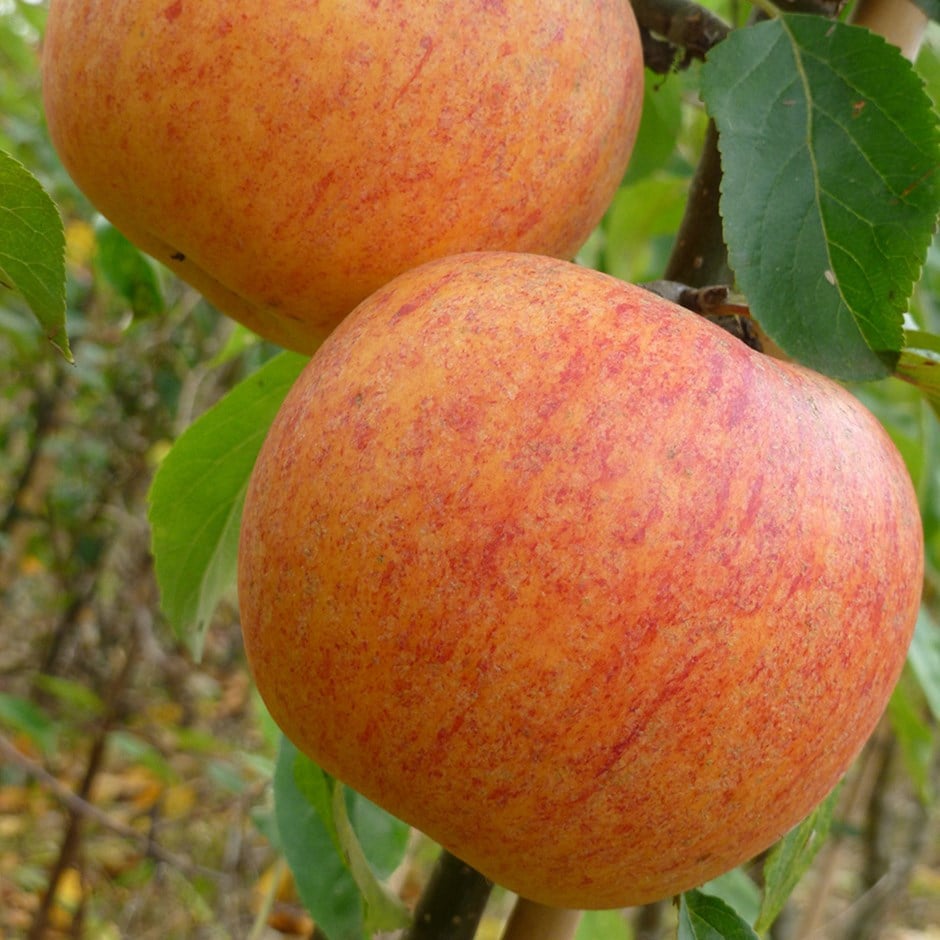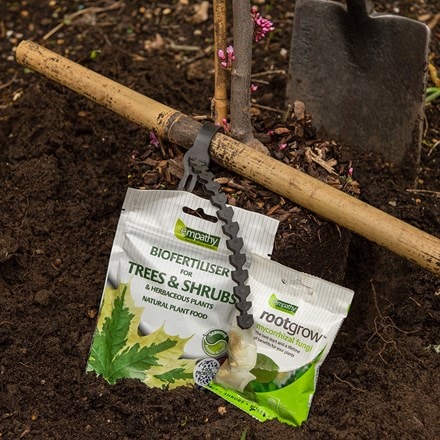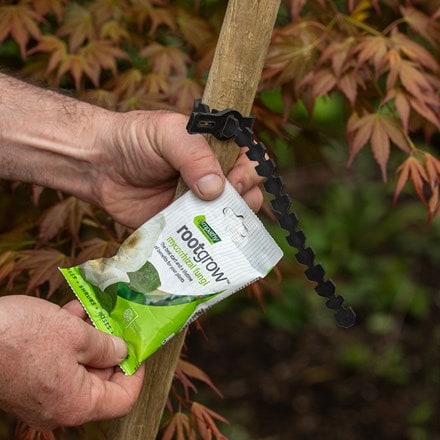apple 'Charles Ross'
eating / dessert apple
- 9 litre pot | MM106 root stock | 1.5m
- £54.99
- In stock (shipped within 2-3 working days)
- bare root | MM106 root stock | 1.2m tall
- £29.99
- In stock (shipped within 2-3 working days)
Delivery options
- Standard £12.99
- Position: full sun
- Soil: moderately fertile, moist but well-drained soil
- Rate of growth: average
- Flowering period: April to May
- Hardiness: fully hardy
A multi-purpose apple from late Victorian England with remarkably handsome, almost pearlescent fruit. 'Charles Ross’ is a versatile cultivar that owes its lively sweet-tart zing and crisp, ivory flesh to its parentage which includes ‘Cox's Orange Pippin’, all in an apple with yellow streaked and orange-red hues. Left to mature on the tree, a sugary bouquet develops, intermingling notes of spice and heady aromas reminiscent of pears. Ideal not just for fresh eating but baking too, slices hold their shape while juices thicken to golden nectar.
Pollination information: This apple belongs to pollination group 3, however it is partially self fertile, so does not need a pollinating partner to produce a crop of apples. For a bumper crop, it can be cross-pollinated with other apples in this group.
Pollination information: This apple belongs to pollination group 3, however it is partially self fertile, so does not need a pollinating partner to produce a crop of apples. For a bumper crop, it can be cross-pollinated with other apples in this group.
When planting your apple tree, prepare a hole up to three times the diameter of its root system. Fork over the base of the pit in readiness, incorporating plenty of organic matter into the backfill and planting hole. Place the plant in the planting hole and carefully refill, firming the soil around the roots to eliminate air pockets. Insert stake at this point if required.
Avoiding frozen and waterlogged soil, trees should be planted out as they arrive. If you've ordered a bare root tree, soak the roots in a bucket of water for half an hour prior to planting - or if this is not possible, they can be heeled in temporarily, covering their roots with soil, or potted up.
Keep the base of the tree weed free, fertilise at the beginning of each year water regularly during hot, dry spells.
The main prune should be done in the winter as long as it isn't frosty or freezing. Take out the 3D’s (dead, dying and diseased wood) and create an open shape. Then reduce the leaders back by a third. Aim to create an airy structure without any crisscrossing branches.
In August summer prune. Shorten any side shoots (or laterals) which are longer than 20cm back to three leaves. This will allow the sun to ripen the fruit and encourage more fruit buds. Make sure that the growth you’re cutting away feels firm to the touch.
Please note: The decorative pot shown is not included and is for presentation purposes only. Our trees are supplied in standard nursery pots, and the images showing young trees in pots are intended to give an idea of our larger plant’s height and form on arrival. We do offer a wide range of decorative pots separately if you’d like to recreate the look, although for long-term success, trees are best planted in the ground.
Please refer to our rootstock guide above for further assistance when selecting a fruit tree that would be suitable for growing in a large (at least 50cm or 20in Ø) pot, filled with a loam-based (John Innes) compost.
Avoiding frozen and waterlogged soil, trees should be planted out as they arrive. If you've ordered a bare root tree, soak the roots in a bucket of water for half an hour prior to planting - or if this is not possible, they can be heeled in temporarily, covering their roots with soil, or potted up.
Keep the base of the tree weed free, fertilise at the beginning of each year water regularly during hot, dry spells.
The main prune should be done in the winter as long as it isn't frosty or freezing. Take out the 3D’s (dead, dying and diseased wood) and create an open shape. Then reduce the leaders back by a third. Aim to create an airy structure without any crisscrossing branches.
In August summer prune. Shorten any side shoots (or laterals) which are longer than 20cm back to three leaves. This will allow the sun to ripen the fruit and encourage more fruit buds. Make sure that the growth you’re cutting away feels firm to the touch.
Please note: The decorative pot shown is not included and is for presentation purposes only. Our trees are supplied in standard nursery pots, and the images showing young trees in pots are intended to give an idea of our larger plant’s height and form on arrival. We do offer a wide range of decorative pots separately if you’d like to recreate the look, although for long-term success, trees are best planted in the ground.
Please refer to our rootstock guide above for further assistance when selecting a fruit tree that would be suitable for growing in a large (at least 50cm or 20in Ø) pot, filled with a loam-based (John Innes) compost.
Goes well with
Premium tree planting kit with bamboo stake
kit & bamboo tree stake
£21.35
In stock (shipped within 2-3 working days)
Essential tree planting kit with softwood stake
kit with with softwood stake
£12.97
In stock (shipped within 2-3 working days)







